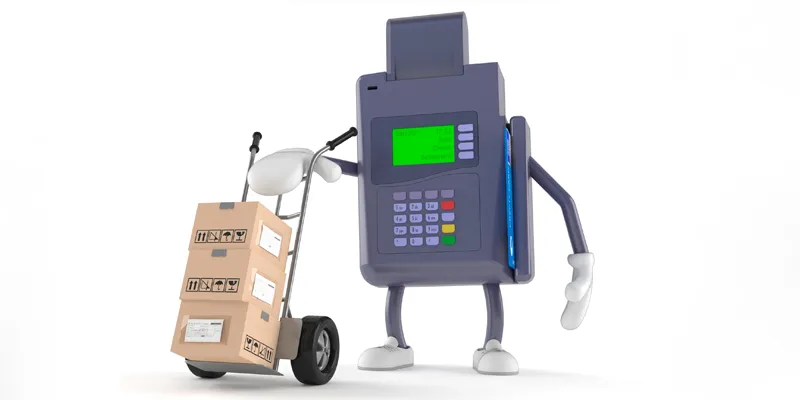The clearing house: The future of e-commerce companies with UPI
Flipkart, Snapdeal, and Amazon India have registered close to four lakh sellers. Several of them operate on all three platforms and they have no exclusivity to a single e-commerce company. How do e-commerce companies make sure that these sellers stay loyal or promote more products on their platform? There is a changing tide in the e-commerce business, where they are moving their investments to make technology relevant for their future.
A major portion – at least 50 percent – of the sellers on the e-commerce platforms are primary sellers and churn their products on a regular basis on market places. Here are a few things that e-commerce companies are investing in to help small retailers run their business with technology:
- Quick turnaround of cash.
- Region wise returns average.
- Consumer behaviour.
- Inventory management.
- Customised consumer loyalty programme for sellers.
- Payment data.
- Product management.
- Vendor finance.

There is so much data ‑ being generated by e-commerce platforms ‑ from the business side that they have begun providing regular sales dashboards to aide their business associates. The challenge is to make information available real time and now they want to focus on real-time settlements with merchants.
However, there is still one problem. Today, settlements ‑ with merchants ‑ are not immediate because 90 percent of the transactions are made by cash. So how does one build a dashboard of immediate settlement with merchants, provide the dashboard for the nine things mentioned above and also get rid of cash and card transactions? E-commerce companies should become clearing houses. A clearing house collects and distributes information. But its primary task is to guarantee settlements with the buyer and the seller. The moment cash is collected ‑ from the consumer ‑ e-commerce companies can use their cash in their account to pay merchants on a real-time basis. This system burdens the working capital of seller and the e-commerce company. However, the objective here ‑ if they are to become a clearing house ‑ is to get rid of cash and cards.
They have the technology to do so and after all they provide a platform for information, rupee collection and hosting of a catalogue of products on behalf of sellers. Think of a system where banks, retailers, and manufacturers are on the same platform as the consumer and the seller.
Today, e-commerce companies have been so busy capturing customers that they forget the importance of the million odd sellers that exist across the country whom they must capture and integrate if they have to make their industry a $20 billion market in five years. Currently, it is less than $5 billion.
How will becoming a clearing house help?
Real-time flow of data is what sells and is obviously a gold mine. In the online world everything is measureable. Customer habits are easy to understand and brands have reasons to tell their merchants to stock up products that sell. However, this is easier said than done because becoming a clearing house is a technology problem. It requires integration of inventory management tools along with the financial platforms that will settle payments immediately.
Think of it as a sort of core banking solution that connects with the platforms of all banks and the central bank.

How does the clearing house work?
Say the customer orders electronics, groceries, and other fast-moving consumer goods on an e-commerce platform. This information is immediately captured by several stakeholders such as the bank, the retailer, the vendor, and the brand when integrated with the e-commerce company’s clearing house platform. Today, the cloud can be a bridge to integrate disparate technologies of the eco-system and link them all together. For an e-commerce company this is not a challenge. It is indeed a business opportunity for startups to build this clearing house platform.
This platform becomes the solution on which monies are settled between merchants, consumers, issuing banks, and settlements banks.
Technically, e-commerce companies become the switch like a MasterCard and a Visa. Remember the card transactions where a customer's payment to the seller is settled by Visa and MasterCard. Here’s how e-commerce companies can become switches like MasterCard and Visa, but with a twist. Imagine a world without card and cash transactions. Now imagine that the entire payment ecosystem connects to the consumer bank account for settlement without having a switch ‑ like MasterCard and Visa ‑ and there will no commissions or a negligible commission for enabling the transaction.
How does one reduce commissions?
The e-commerce companies can bring a low commission regime by working on the Unified Payment Interface (UPI) launched by the National Payments Council of India. The NPCI hopes to link bank accounts to transactions and in the process the technology will do away with cash and cards.
How will e-commerce companies make money? They will continue to make money off the commission given by small businesses for closing customer transaction. This system will begin a low commission regime that benefits consumers and remember it will be a careless and cashless transaction. Payments will be made by WiFi/Bluetooth where the delivery boy activates his app to request payments. The consumer accepts the receipt of good on the e-commerce app and syncs his bank account directly for payment. Identification will be established ‑ by the bank ‑ through an Adhaar-based finger print and Iris authentication. All these will be integrated on the e-commerce app.
Currently, the commission structures on card transactions is close to two percent, which is shared between the payment gateway, banks, MasterCard, and Visa. Net banking too charges a commission worth 1.50 percent. Most importantly, the commissions are exposed to foreign exchange risks since all settlements are made by Visa and MasterCard ‑ in the USA ‑ in US dollars. Our consumers end up paying higher commissions due to foreign exchange fluctuations. No wonder the government is pushing the UPI to change all this and has requested startups to build on this platform.

Here is why there are acquisitions
Flipkart acquired PhonePe and Shopclues acquired Momoe to enable transactions over mobile. Snapdeal has FreeCharge and PayTM has the metal to go in this direction. Amazon has the technology that can become a clearing house immediately.
In five years, transactions without cash and cards could transform the following:
1 The Supply chain will be localised with effective data.
2 Payment cycles will be immediate between the ecosystem.
3. Brand engagement with their retailers will be intelligent.
4. Small retailers will make more money out of e-commerce as a sales channel.
5. Consumers will have convenience in payments
Transforming Indian retail
The job of the clearing house is an effective way to transform India and the e-commerce companies have the data of 100 million consumers and their financial habits. But an ecosystem has to come together, which means banks, retailers, manufacturers, brands and logistics companies have to make the clearing house scenario possible.
How do they make it happen?
This is the argument and case that the e-commerce companies can build to make a business case for themselves for a viable future. It is time they become technology companies and not remain trading houses. They have the skills to clear out from a burdened past.







